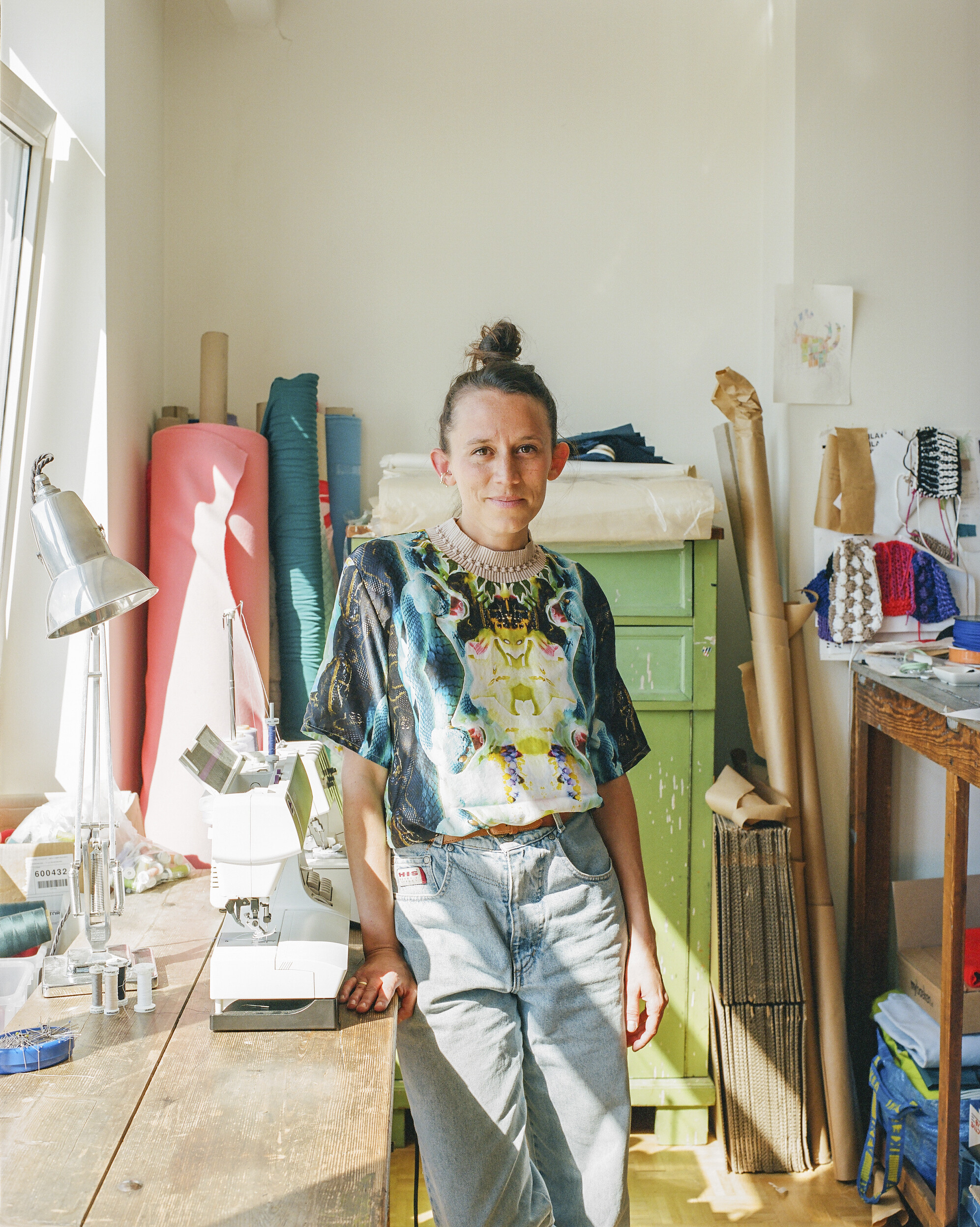
“When it comes to costumes, it's about finding harmony and equality on stage while still aiming for the best appearance for everyone."
Interview with Lila John
Meet Lila, a fashion designer passionate about colors, art, and clothing. Her fashion brand Lila&John is renowned for sustainable, bold, and versatile knitwear with an urban touch. Lila's designs move effortlessly from casual to chic and appeal to all ages and backgrounds. Her collections empower wearers and highlight their inner beauty. In addition to her own brand, Lila collaborates with choreographers and artists, including Anne Teresa De Keersmaeker. You can discover a piece by Lila for Rosas at our Fashion Moves expo.
MAD spoke with Lila John about her sources of inspiration, her ready-to-wear brand and costume collections and her collaborations with performers and choreographers.

Can you tell us a bit about yourself and the journey you've taken in your career?
"I was born and raised in Vienna, Austria, where I studied fashion at the Academy of Applied Arts. During my studies, I had the opportunity to work as a costume designer, which I saw as a way to earn some extra money. And so one project followed the next."
"About 6 years ago, when I moved to Brussels, I shared my studio with the costume designer Sofie Durnez. She introduced me to Rosas, where I started working as an assistant to the costume designer Anne Catherine Kunz. Through this position, I got to know Anne Teresa De Keersmaeker, and shortly after, she asked me to collaborate on the graduation show of P.A.R.T.S. at Kunstenfestivaldesart. At the same time, I also worked with Michiel Vandevelde, who had asked me to create a fashion collection for the performance “Paradise Now. I found both projects very interesting extensions of my practice as a fashion designer."
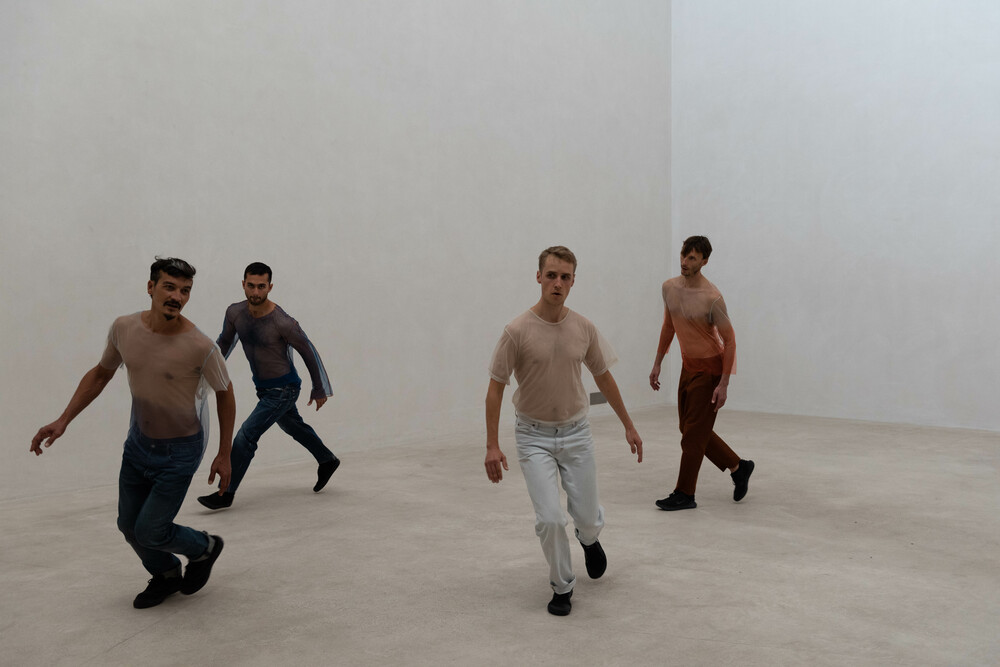
You will soon be participating in our new expo 'Fashion Moves', where you'll be exhibiting a piece, you designed for a performance by Anne Teresa de Keersmaeker. Could you elaborate on this collaboration? How did you begin designing these costumes and what inspired you during this process?
"Dark Red was an invitation from the art foundation “Kolumba”, a space with a strong religious aura in Cologne. Probably because of that, Anne Teresa suggested linking the piece to the twelve apostles. We worked with only male dancers and tried to connect them to portraits of the apostles that El Greco had painted."
"I wanted to use the colors from the paintings for the costumes. In the beginning, it was a bit of a search, but since it wasn't the first time I worked with Anne Teresa, I could better understand what she was looking for. We already knew each other's preferences and aesthetics to some extent. From our shared love for working with transparency, I suggested dyeing mesh fabric."
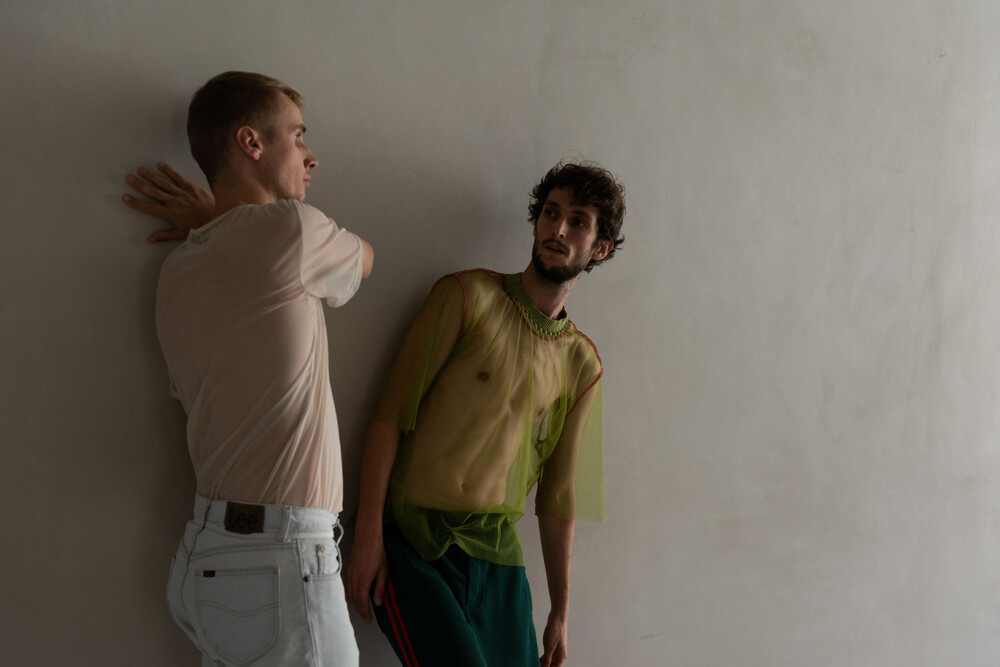
In the performance Dark Red, some dancers wear transparent tops while others wear more everyday outfits like a polo and jeans. You see the typical men garderobes in contrast with the other pieces, what was the reason about?
"We contrasted the robust denim jeans with something delicate to infuse a poetic touch. In the paintings, they wore draperies, which gave a more gentle notion. Since we were aiming for this, we created it using transparent tops."
"Additionally, we used everyday clothing because the performance took place in a museum setting, allowing the dancers to blend in with the audience. The idea was that the visitors wouldn't immediately know they were standing next to the dancers. This way, we could surprise them when someone next to them started dancing."
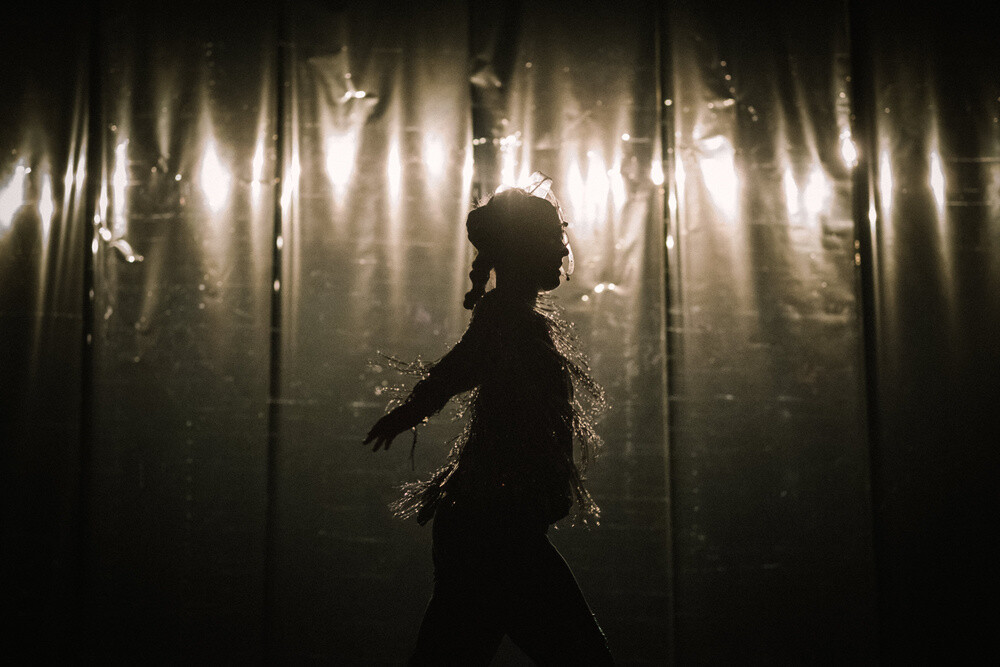
To what extent did the choreography of the performance influence the costume designs? Are there specific movements or dance styles that you wanted to emphasize or support?
"For me it's always essential to first observe the choreography and participate in rehearsals before starting to design. It's interesting to see the movements because some clothing items can hide certain movements, while others can emphasize them. Costumes can even influence the space. I remember one time, for Radouan Mriziga I made something with sequins and pearl fringes that made noise; we then decided to make the space very dark. In this way, costumes and movements can really complement each other."
"Anne Teresa focuses heavily on the body, which is why transparency is so intriguing. For example, she shows how the muscles move while the dancers are still wearing something."
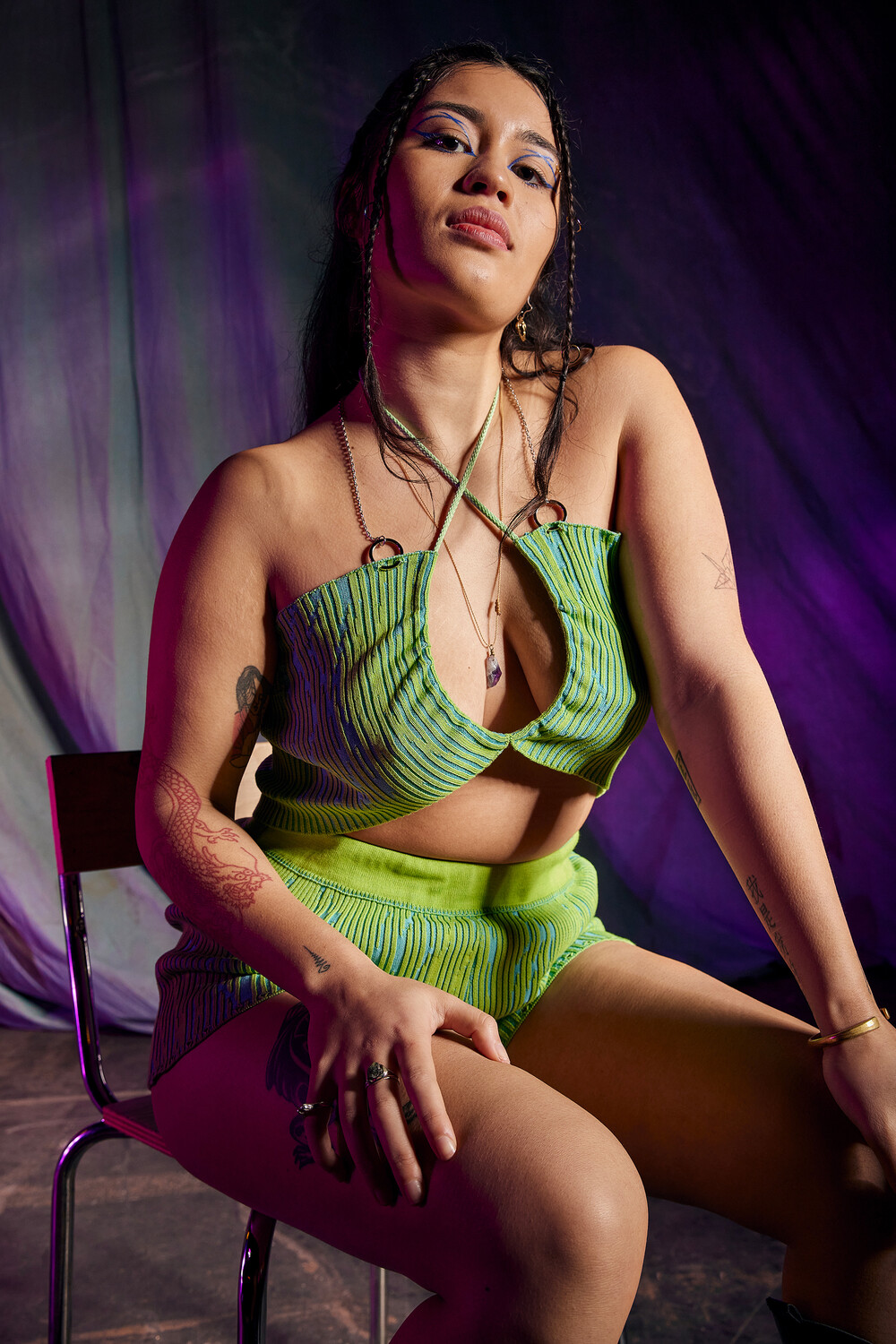
Besides Anne Teresa de Keersmaeker, you have collaborated with other choreographers and artists. What makes costume design for theater and dance so fascinating for you? How does it differ from designing regular clothing lines or your designs for your brand 'Lila&John'?
"When designing costumes, there's often a specific request or theme. For example, when I collaborated with Radouan Mriziga on Tafukt, the performance was focusing on the semantics and mythologies of the Imazighen. This provided a wonderful opportunity to explore this culture and heritage. Such an invitation allows me to explore something new that I might not have otherwise."
"Currently, I'm working for the first time on costumes for a theater piece, “Hoplessly Devoted” by Kae Tempest which is set in a prison. This requires a different approach, focusing more on the text and story rather than the movements. In both cases, it's important that the dancers and actors feel comfortable on stage."
"For my brand Lila&John, I work primarily with knitwear. Knitwear often has an old-fashioned look, so I was looking for ways to make it more contemporary and bold, which led me to include shiny metal rings. I also chose knitwear because of a knitwear factory in Belgium, since I like to produce locally and work with existing resources. My collections always start from colors and techniques. I like combining colors and having a certain tactility, as well as using durable yarn which contributes to the sustainability of my designs."
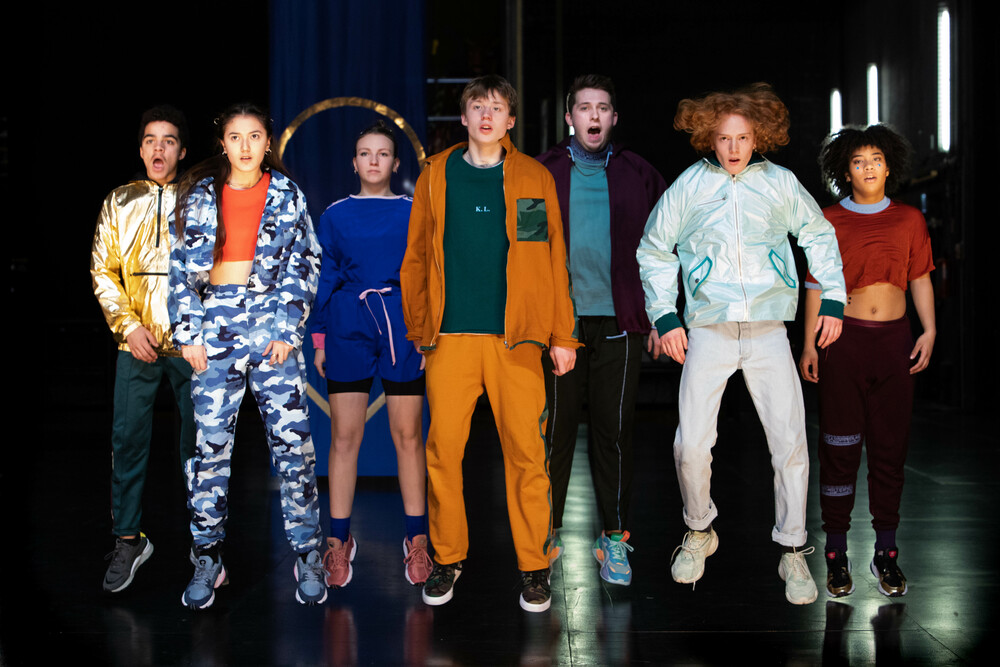
Color is a very important aspect in your designs. Can you tell us more about this?
"It comes quite intuitively to me. I am obsessed with colors. Some colors suit certain people better and enhance their appearance. Also, colors can be more interesting in combination with each other than alone. For me, it's like a game: how you can combine colors and how they can enhance each other and the people wearing them."
"When it comes to costumes, I often look for colors that make the specific performer shine. You often have to find a balance because not every color looks equally good on everyone. One person looks amazing in blue, while another may fade into it. It's about finding harmony and equality on stage while still aiming for the best appearance for everyone. It's a matter of counterpoise."
"Additionally, I'm now starting to work in other ways with colors as well. Recently, I gave color advice for a architectural installation in Leuven, an open air performance space called Oleveodroom."